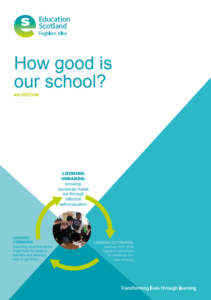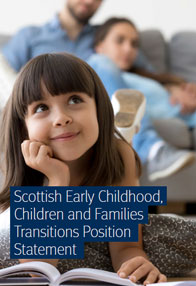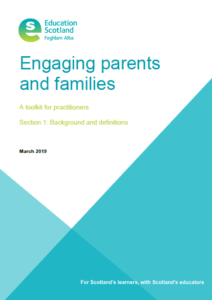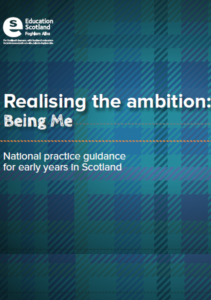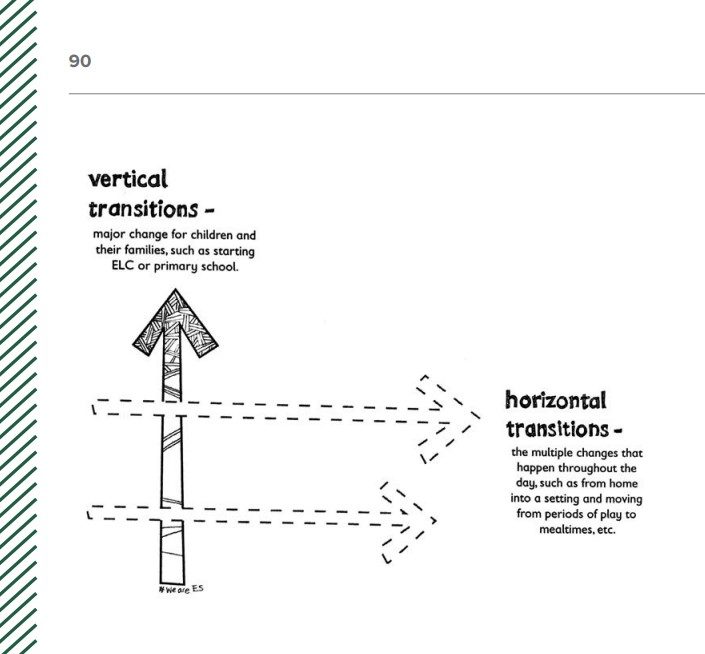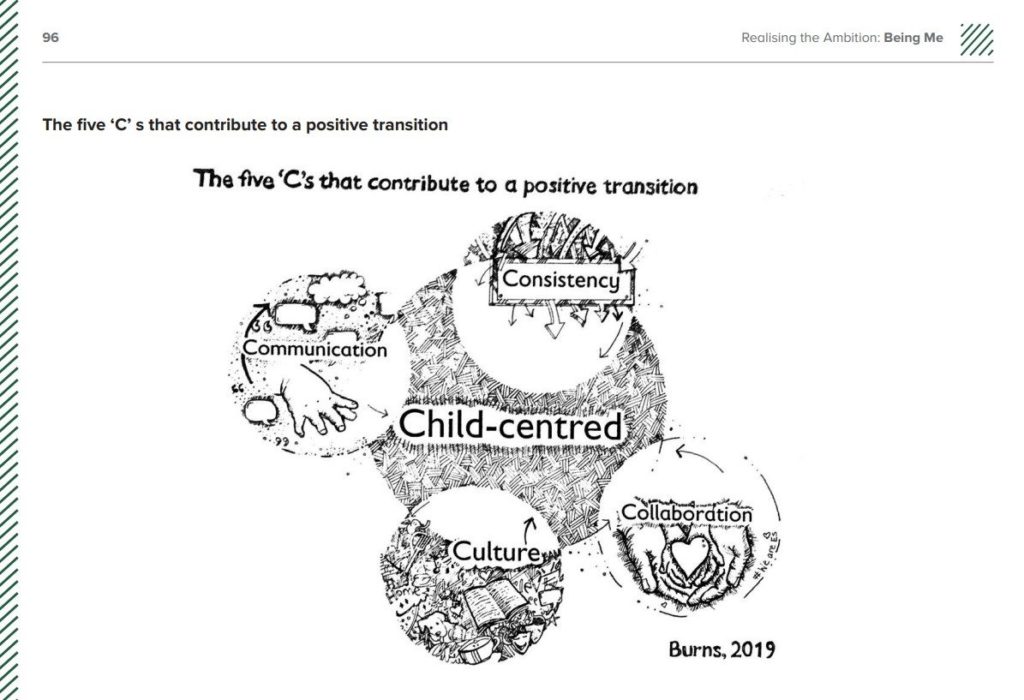Transitions
– Reflecting on Practice
QI 2.6 p36
How effectively do our processes for settling in new children support them and their parents/carers to become familiar with their surroundings? To begin to develop close, positive relationships and to continuity in meeting their care and learning needs?
How effectively do we engage with parents/carers, children and other agencies to build up a clear picture of the child?
How well do we work with parents/carers to ensure transitions are personalised, planned in advance and sensitively handled? How do we support parents/carers to adjust to change at key points of transition?
How do we support children to develop a positive attitude to change, and form new relationships to ensure continuity as they move across the setting?
In what ways does information from profiling and personal learning planning ensure continuity and an appropriate pace of progress in learning for all children?
How effectively do we use transition information to plan progressive learning and developmental pathways for all children?
What examples do we have of transitions being adapted to suit individual needs and circumstances? What difference has this made for children and families?
To what extent do we discuss children’s growing skills in early literacy, numeracy and health and wellbeing, as they move from one setting to another or on entry to primary school? • How well do we work with parents/carers and with partners in other agencies to plan transitions for children who require additional support?
p32, QI 1.5 Effective Transitions
- Approaches to transitions promote children’s security and wellbeing
- Effective communication, throughout transition promotes continuity and progression of children’s care, play and learning.
This indicator focuses on the need for children to be well supported at times of transition. Recognising that moving into and out of the early learning and childcare setting, or moving through different rooms or stages of learning requires careful planning. This includes developing procedures that consider children’s individual and developmental needs within the transition planning process. It promotes the need for meaningful consultation and effective communication with children, families and all professionals involved when any changes in the arrangements for their care, play and learning are due to take place.
p35 Scrutiny toolbox: Improvement and support questions
How do we know our approach to transition supports best outcomes for children and their families?
In what ways do family and children’s views influence decisions about transitions within our setting?
How well do we link with other professionals to make a positive difference to children’s experience of transition?
How confident are we that our record keeping and relevant information to support children and their families is shared effectively and securely to support positive transitions?
How well do we ensure that transitions are child-centred, sensitively planned and implemented?
How effective are our partnership approaches (parents, health education, social service, third sector, other care services) when ensuring children’s wellbeing needs are being met?
How do we measure the positive difference our transition process is making to children and their families?
QI 2.6 p45
To what extent are all children and young people supported so that both their learning and social and emotional needs are addressed?
How effective are our transition arrangements in raising the attainment of children and young people?
How effectively do we use transition information to plan progressive learning pathways for all children and young people?
To what extent do staff have opportunities to develop a shared understanding of: progress in learning across levels and into the senior phase; and effective approaches to learning and teaching?
How effective are the opportunities we provide for children and young people to discuss their progress with key adults in supporting continuity in learning at transitions?
To what extent are we using information from profiling and personal learning planning to ensure continuity in learning for all children and young people?
To what extent do our processes for: involving children and young people; parents, carers and families; and partners and other agencies ensure effective transitions for all learners?
To what extent does our curriculum provide opportunities for support and induction into the next phase of learning?
To what extent do transition arrangements offer children and young people opportunities to learn about change in a positive way?
How effectively are we ensuring learners achieve sustained positive destinations when they leave school?
Section 5: Activity 7: Involving parents in transition p14
“Children and young people are entitled to support to help them prepare for and deal with transitions from stage to stage, class to class and between sectors and establishments. Recognising the vital role of parents in supporting their children at these key transitions is important. Transition stages are also a time of change for parents who may also need support and reassurances themselves”.
- How do you currently communicate and involve parents in transition arrangements?
- What makes a positive or negative transition experience?
- What are the challenges to communicating and involving parents in transition arrangements?
- What are the benefits of improving parental involvement in transitions?
UNCRC: Article 3, Article 5, Article 6, Article 23, Article 24, Article 28, Article 29, Article 31
Links to the Health and Social Care Standards: 1.1,1.2,1.6,1.29,2.2,2.3,2.9,3.14,4.2,4.16,4.18,4.23
The National Standard:
CRITERIA 5 – Parent and carer engagement and involvement in the life of the setting
- Sub-criteria 5.1 – There is open and regular communication with parents and carers about the work of the setting and families are meaningfully involved in influencing change.
- Sub-criteria 5.2 – Parents and carers are supported to engage in their child’s learning and development.


